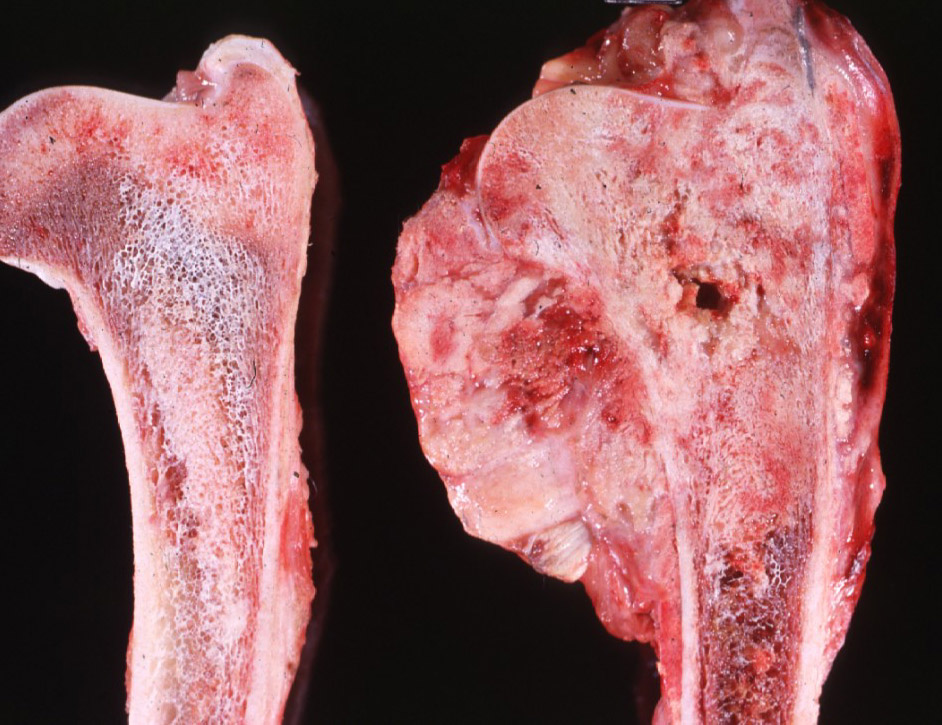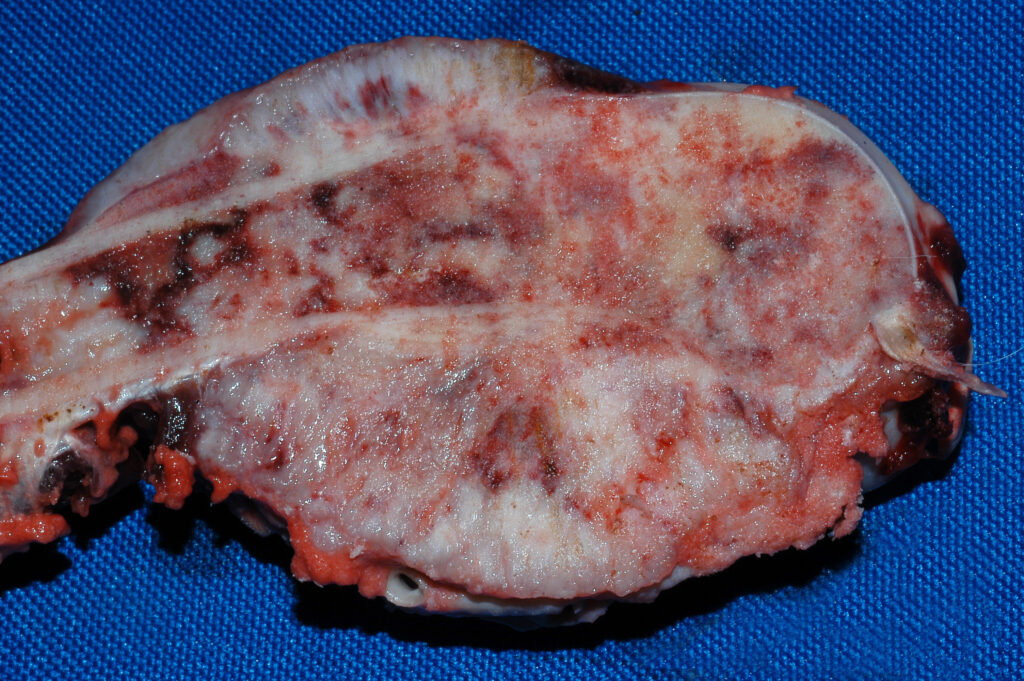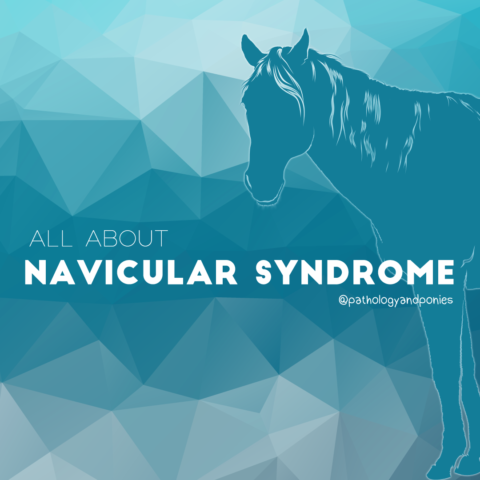Today’s path rounds is on 𝐨𝐬𝐭𝐞𝐨𝐬𝐚𝐫𝐜𝐨𝐦𝐚, inspired by a case I had this week!
𝐖𝐡𝐚𝐭 𝐢𝐬 𝐢𝐭?
Osteosarcomas are tumours that arise directly from the bone. They most commonly develop from the long bones, like the femur or radius, however they can develop from any bone in the body! These tumours very commonly 𝐦𝐞𝐭𝐚𝐬𝐭𝐚𝐬𝐢𝐳𝐞 (spread to other organs), particularly to the lungs.
𝐖𝐡𝐨 𝐠𝐞𝐭𝐬 𝐢𝐭?
These tumours are most common in dogs and cats, particularly large and giant breed dogs. They can be found in other species though!
𝐇𝐨𝐰 𝐢𝐬 𝐢𝐭 𝐝𝐢𝐚𝐠𝐧𝐨𝐬𝐞𝐝?
Typically, osteosarcoma is initially suspected based on an X-ray. Then the veterinarian can take a 𝐛𝐢𝐨𝐩𝐬𝐲 (small piece of the tissue) or an 𝐚𝐬𝐩𝐢𝐫𝐚𝐭𝐞 (poking it with a needle to gather cells) to send to a pathologist for analysis.We look at the sample under a microscope to see what kinds of cells are present. If the cells have 𝐟𝐞𝐚𝐭𝐮𝐫𝐞𝐬 𝐨𝐟 𝐦𝐚𝐥𝐢𝐠𝐧𝐚𝐧𝐜𝐲 (look like nasty, no-good cells), then we may be able to make a diagnosis of osteosarcoma.
𝐇𝐨𝐰 𝐢𝐬 𝐢𝐭 𝐭𝐫𝐞𝐚𝐭𝐞𝐝?
Typically, osteosarcomas on the limbs are treated by amputating the leg. Osteosarcomas in other sites can sometimes be surgically removed, however it is a much more painstaking process than simply removing a limb! Animals are also able to receive chemotherapy to help treat these tumours.
𝐏𝐡𝐨𝐭𝐨𝐬
1) A radiograph (X-ray) showing a massive tumour at the end of the bone.
2) A radiograph (X-ray) showing metastases of the tumour to the lungs. Those big white nodules should not be there!
3) A microscopic view of an aspirate from an osteosarcoma, showing mean looking tumour cells.
4 and 5) Cross sections of bones with osteosarcoma, showing large tumours!
𝐒𝐨𝐮𝐫𝐜𝐞𝐬
Zachary, J.F. Pathologic Basis of Veterinary Disease, Sixth Edition.
Photo 1 courtesy of University of Calgary Veterinary Medicine Diagnostic Services Unit.
Photos 2-5 courtesy of Noah’s Arkive.









